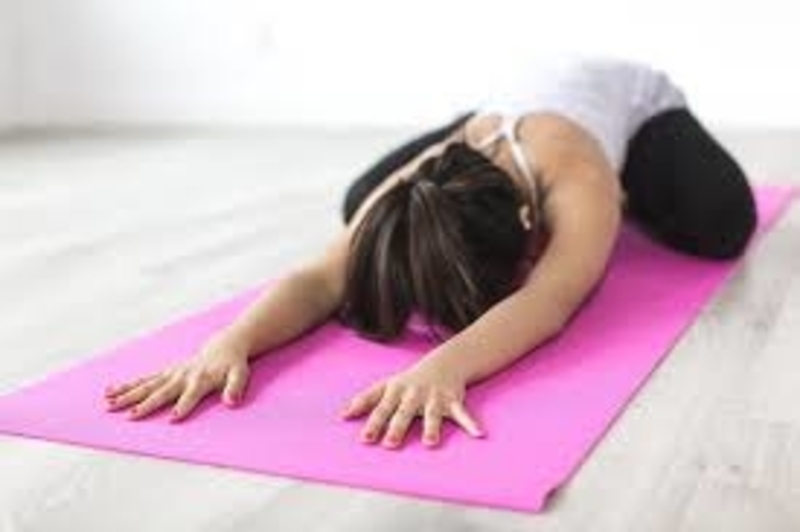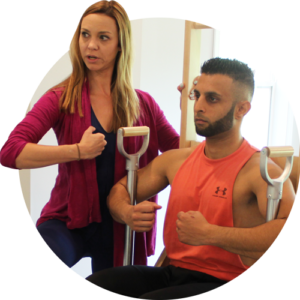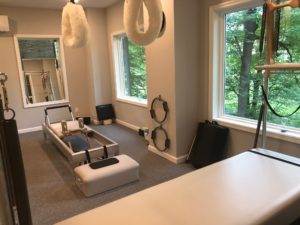What’s the Difference Between Pilates and Yoga?

Pilates and yoga have a lot in common. This explains why many people don’t know the key differences between Pilates and yoga. Both disciplines fall under the category of mind-body exercises and rely on the body’s own resistance to improve flexibility, strength and coordination. The practices also incorporate breathing techniques to achieve better physical outcomes. Of course, there are key distinctions between the two disciplines to understand before deciding which is right for you.
One Big Difference
What’s the major factor distinguishing Pilates from yoga? It’s spirituality. While both disciplines have meditative qualities, Yoga focuses on reaching “outward” to connect with a universal energy, whereas Pilates is focused “inward” to find the mind-body connection.
Pilates Overview
Pilates classes provide attendees with a structured workout that emphasizes a person’s core. It enhances flexibility, strength, body control and muscle tone. The focus on Pilates is retraining and correcting the body and mind to move from a stable center to support the rest of the body to move more efficiently in your activities without injury.

The exercise regime appeals to a broad range of people. Anyone who has suffered injuries can appreciate the low-impact nature of the exercises. It’s a popular option for older generations and anyone who don’t want to grapple with performing complicated postures. Finally, it’s a go-to practice for people who prefer a simple, straightforward fitness program without all the chanting, cardio or Oms.
The Core Matters
Pilates is core-focused and works on strengthening the “center” of the body. It then works its way “outward” to the limbs in lower repetitions using the Pilates principles, also gaining strength, balance, and flexibility. The core is called the “powerhouse” because it determines how the bulk of the muscles and limbs move. The core muscles include:
- Abdominals
- Lower back
- Spine, back and trunk muscles
Exercise Equipment
A mat is a common accessory for both Pilates and yoga. However, Pilates takes it a step further with the incorporation of exercise apparatuses to provide additional resistance.
 Examples of these apparatuses include the “Cadillac” and the “Reformer.” These devices have springs, pulleys, cables and trolleys that help practitioners develop long, lean muscle. The equipment allows for precise weight-training and feedback while helping the student sculpt their body into a dancer’s physique. An additional benefit is that the body-enhancing equipment is it can be used for all fitness levels.
Examples of these apparatuses include the “Cadillac” and the “Reformer.” These devices have springs, pulleys, cables and trolleys that help practitioners develop long, lean muscle. The equipment allows for precise weight-training and feedback while helping the student sculpt their body into a dancer’s physique. An additional benefit is that the body-enhancing equipment is it can be used for all fitness levels.
Rehabilitation
The foundation of Pilates is rehabilitation. This is one reason why it’s a popular exercise program for anyone who has suffered a neck or back injury. The exercises are safe and gentle, so there’s no strain placed on injured areas. Additionally, Pilates is founded on six principles:
- Centering
- Concentration
- Control
- Precision
- Breath
- Flow
All these components are seamlessly integrated into every Pilates workout. This gives students the best outcome for improving their coordination, correcting spine alignment, and regaining flexibility and strength. Participating in regular Pilates classes also reduces the likelihood of future injuries. When you combine these exercise routines with Pilates breathing methods, participants achieve a higher level of grace, poise and stress reduction.
Yoga Overview
Yoga emphasizes broad muscle groups and flexibility. Students learn complex postures ranging from nourishing and gentle to sweaty and challenging. Additionally, there are many forms of yoga to choose from, such as Anusara, Vinyasa and Hatha. However, the common thread is spirituality, strength, endurance and balance. If you don’t enjoy challenging poses, then yoga probably isn’t right for you.
Strike a Pose
The main thing you need for most yoga classes is a mat and your body. Students are taken through a series of forward bends, twists and backbends. These poses also involve breathing exercises. Typically Yoga classes are taught by to an entire group, while Pilates classes are smaller in size and can give each individual specialized attention.
Meditation Time
 Meditation is a central component of yoga’s mind-body practice. Although there are many styles of meditation, the ultimate aim is to achieve self-realization. During the classes, practitioners focus on body movement rather than their random thoughts. The shift away from mental “busyness” to focusing on poses is often referred to as moving meditation.
Meditation is a central component of yoga’s mind-body practice. Although there are many styles of meditation, the ultimate aim is to achieve self-realization. During the classes, practitioners focus on body movement rather than their random thoughts. The shift away from mental “busyness” to focusing on poses is often referred to as moving meditation.
A Way of Life
Like Pilates, there’s an underlying philosophy that supports yoga. In the ancient text, Yoga Sutras, several principles known as yamas and niyamas are outlined. These include:
- Self-study
- Cleanliness
- Non-harming
Yoga is a Sanskrit word that’s often translated as “union.” The goal of yoga is the unification of the practitioner’s body, mind and spirit. With this in mind, yoga is a lifestyle practice that helps students nurture their physical and spiritual well-being.
The Pilates vs. Yoga Outcome
Now the big question: is Pilates or yoga best for you? Well, what you choose can also depend on your goals and fitness level. If you prefer low-impact exercises that strengthen your core muscles and focuses on individual instruction, then Pilates is hands-down the best choice. If you want to schedule a session with a certified Pilates instructor, contact The Pilates Swan today.

Recent Comments